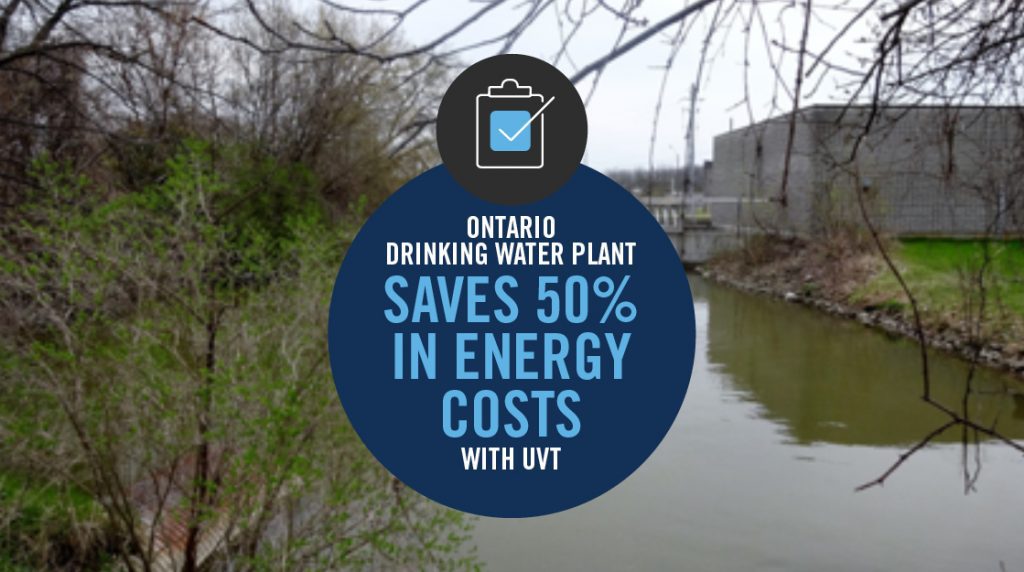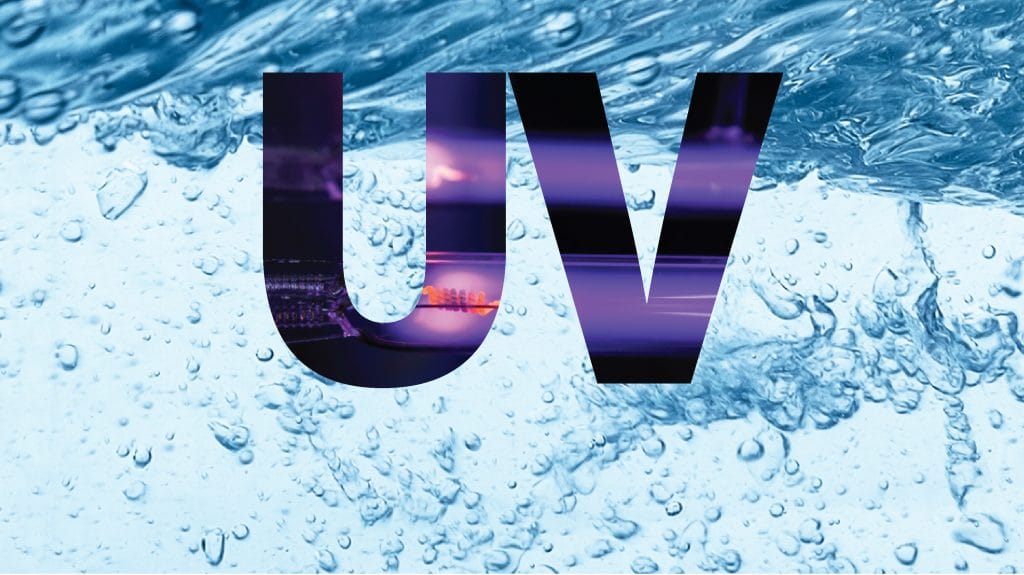BENEFITS OF REAL-TIME MONITORING
- UV disinfection performance assurance
- Dose pacing for energy savings
OVERVIEW
UV disinfection for water treatment or wastewater treatment is a process where a system disinfects water using UV light to damage the DNA of microorganisms in the water which prevents dangerous pathogens such as cryptosporidium and e-coli from reproducing and causing harm.
UV DISINFECTION DOSE AND UV TRANSMITTANCE (UVT)
The effectiveness of a UV disinfection system is determined by the UV dose that the UV disinfection system is able to deliver to the water. The UV dose is dependent primarily on the combined effects of the UV light intensity, the exposure time of the system and the UV transmittance (UVT) of the water.
The intensity of the UV light source depends on the size and type of UV lamp used and the power supplied to the lamp. The exposure time of the system depends on the flow rate of the system. The flow rate is often regulated between multiple UV disinfection systems operating in parallel, and there is often a manufacturer specified maximum flow rate for the system. The UVT of the water being disinfected can significantly affect the effective UV dose delivered to the water by the UV disinfection system and it varies over time and from site to site.
UVT is related to the quantity of organics, colloidal solids and other material in the water which absorb and scatter the UV light as it passes through the water. In a UV disinfection system, if the UVT of the water is too low, then the UV light is not able to penetrate the water as efficiently, thereby reducing the effective
UV dose delivered by the system. This is why manufacturers usually state a minimum UVT for a UV disinfection system, below which the system will not function properly.
TURBIDITY AND COLOUR
It is often thought that if the water appears clear to the naked eye, or if the turbidity is low then this means the UVT will be high. However, this is not correct. Turbidity is a measure of the quantity of suspended solids in the water and is not related to the organics or fine particles that tend to affect UVT. It is true that colour usually does indicate the presence of organics in the water such as tannins and humic material. However, it does not follow that just because the water doesn’t appear coloured that the UVT will be high. This is because some organics and other matter can be present in the water that cause low UVT but do not add any visible colour to the water, an example of this is pesticides.
CHANGING UVT
Often one water source can contain a varying amount of organic material, and therefore will have different UVT values at different times. This is especially true for surface water applications such as a lake or river. Different kinds of weather can potentially affect the UVT of a water source, which tends to cause significant changes in UVT from season to season. The spring and fall months typically have the lowest UVT values due to melted snow runoff and decaying
plant matter. Due to the effects of UVT on the performance of UV disinfection systems, it is vital the UVT of the water be known for every UV disinfection system application to ensure proper treatment.
REAL TECH UVT SOLUTIONS
Real Tech has several products that are commonly used to ensure the correct operation and performance of UV disinfection systems. With over a decade of design and application experience, we manufacture a complete line of tried and trusted UVT solutions for wastewater to high purity water applications including real-time monitors and probes as well as portable test meters. Discover your next UVT solution here.
________________________________________________________________________________________________________________________
RELATED POSTS
CASE STUDY: UVT ANALYZER HELPS WTP SAVE 50% IN ENERGY COSTS
CASE STUDY: ACCURATE AND RELIABLE UVT FOR NEARLY A DECADE
WHAT IS UVT?
GO BACK TO BLOG
![]()




